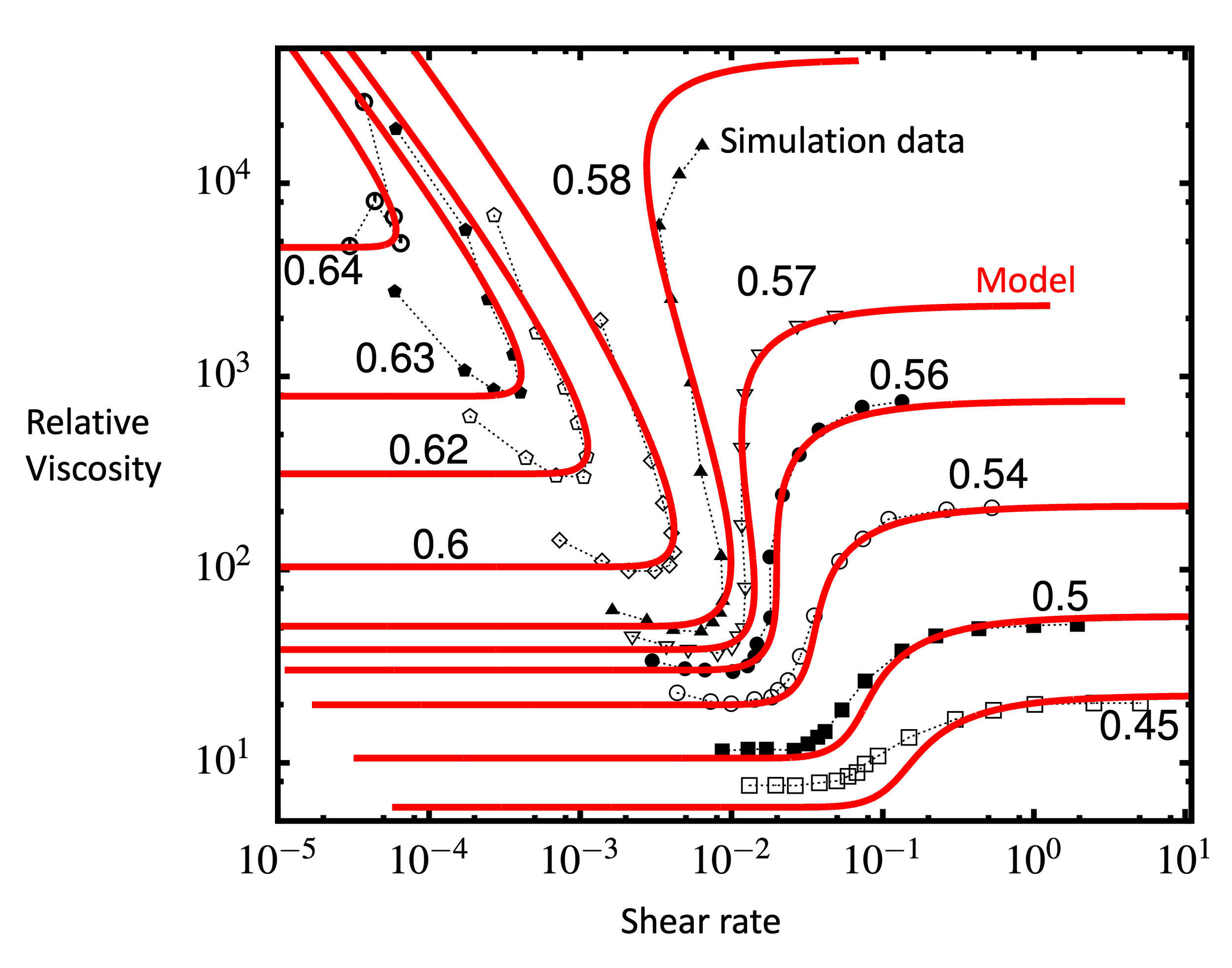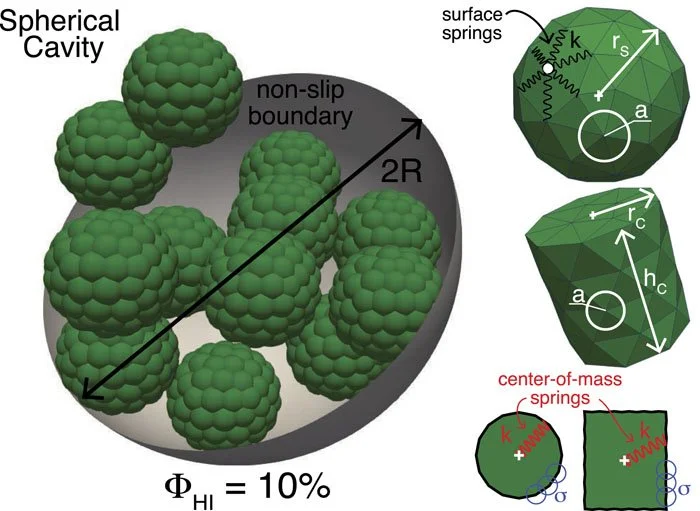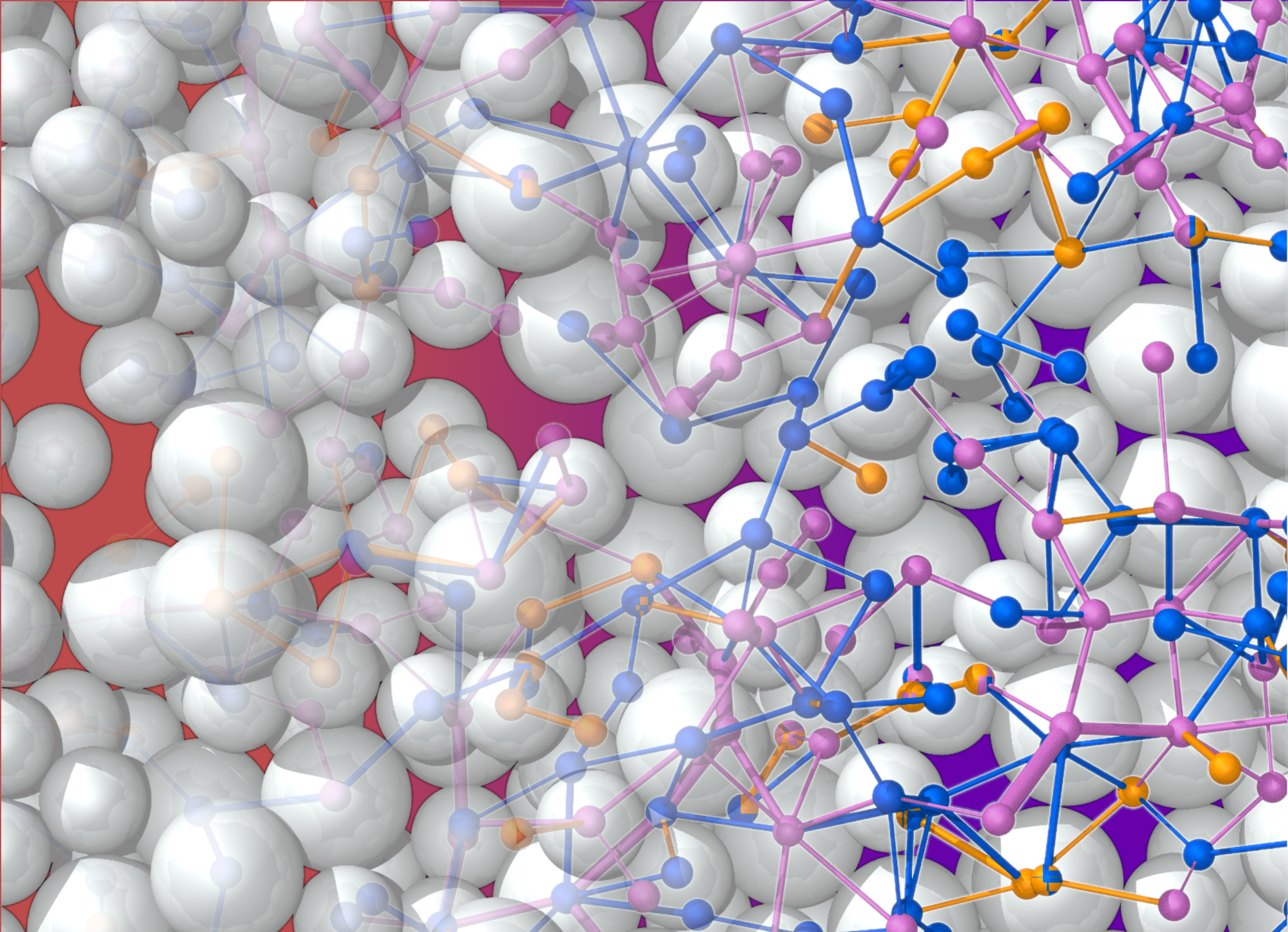Research in our group focuses on the structure and dynamics of soft matter over many length and time scales. Such materials are present in our daily lives and are all around us. We are excited towards understanding “Why does the Nature behave in the way it does.” We employ multi-scale simulations to understand and predict flow of particulate systems. The microscopic ingredients in these systems affect their mesoscale correlations and thus dictating the macroscopic behavior. By constructing careful and detailed simulations leading to accurate constitutive models, we seek to predict material properties, guide the design of new materials and explain puzzling experimental observations.
Predictive Modeling of Dense Suspensions
Theoretically sound continuum models are needed to predict flow of a material ranging from flow of slurry in a pipe, runout of mudflow, etc. Previous methods have focused on dilute cases, and application to dense or heterogeneous cases remains an immense challenge. Using detailed particle simulations to build up constitutive models for dense frictional suspensions across many concentrations and flow types/geometries. Additionally, we also analyze the fluctuations in data and relate it to microscopic quantities.
Algorithm Development for Soft Matter
Dense suspensions are ubiquitous in nature, industry and human health with examples spanning from Obleck, industrial slurries and biological cells. As an example, the biological cells are composed of macromolecules such as proteins and lipids that diffusive and assemble in a confined geometry. Modeling these suspensions require accurately integrating Brownian, hydrodynamics, contact, friction and other conservative forces with/without confinement walls. None of the previous attempts include all at the same time. These numerical schemes answer long standing questions such as Why can we run on Oobleck, and anomalous slow diffusion of macromolecules under confinement.
Network Science Approaches in Particulate Flows
Particulate systems under external deformation lead to formation of frictional networks between particles. We use Network Science tools to build the connection between Microscopic grain properties to Macroscopic response via the Mesoscale structure. Using this approach we aim to explore outstanding questions like onset of rigidity or solidification in amorphous materials.



